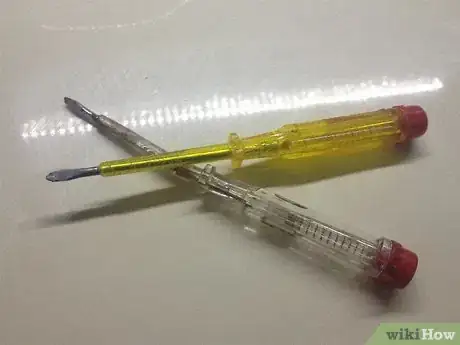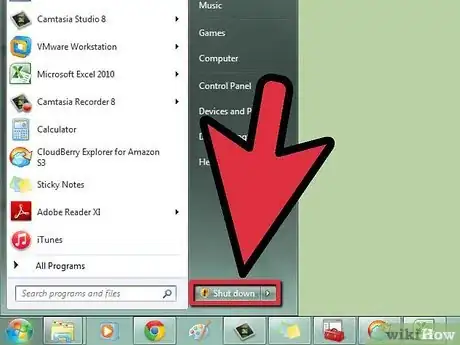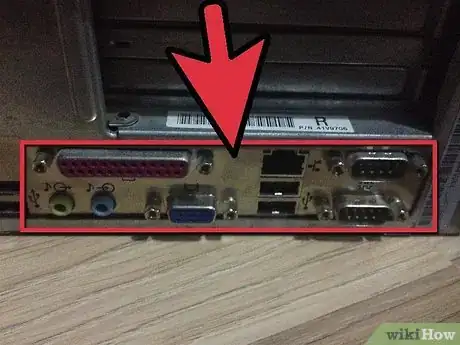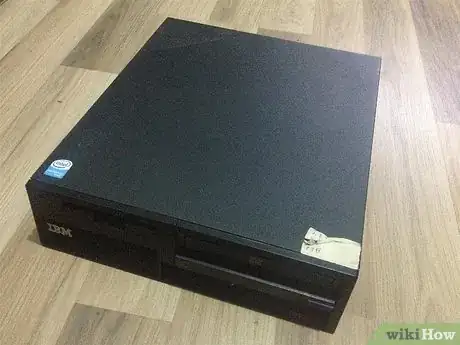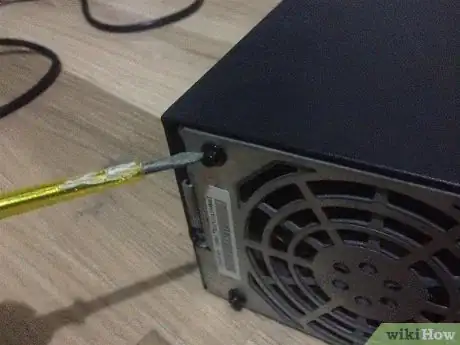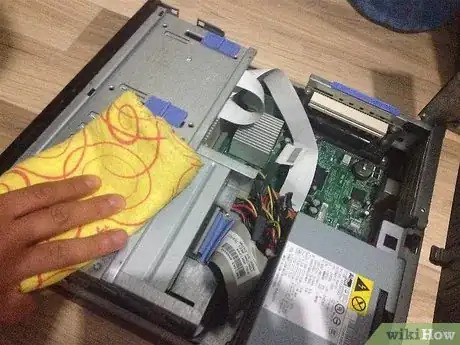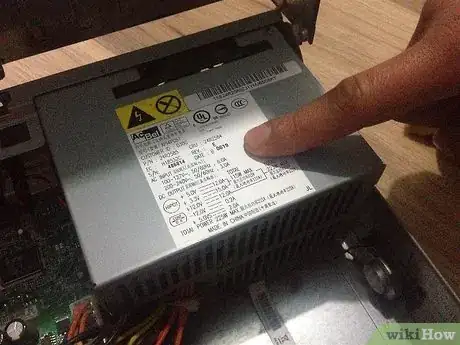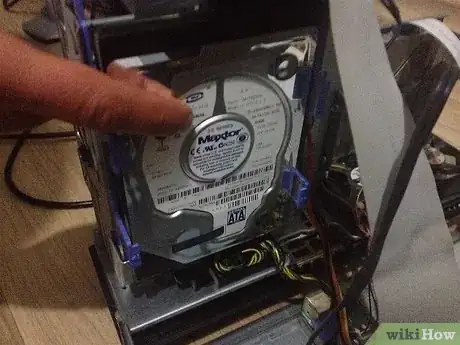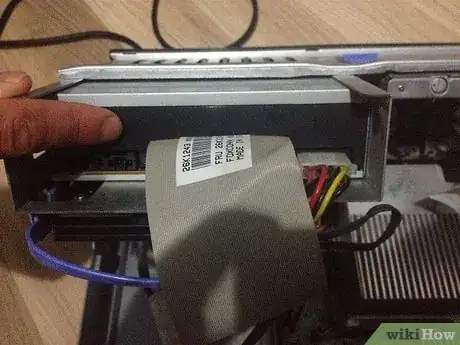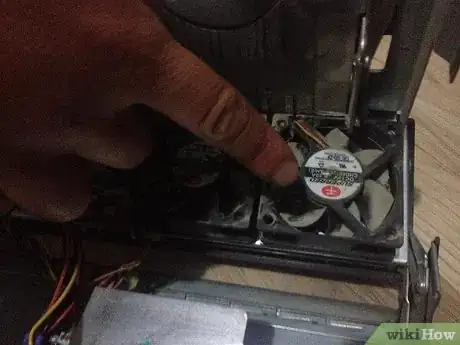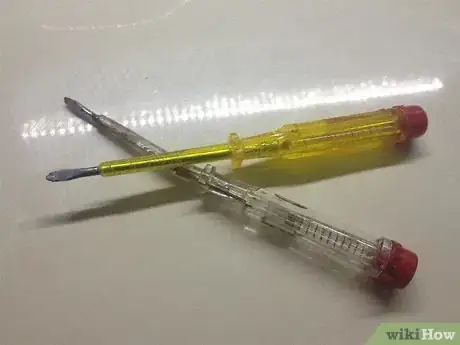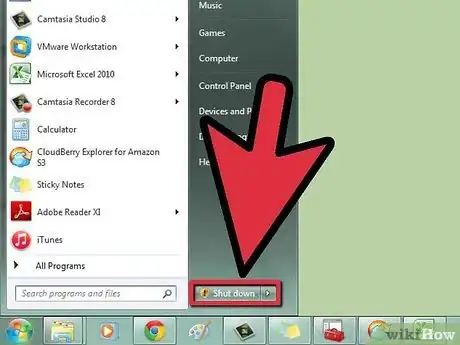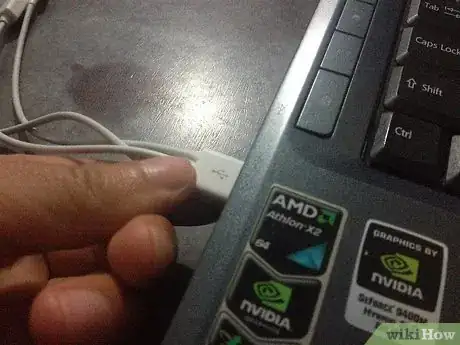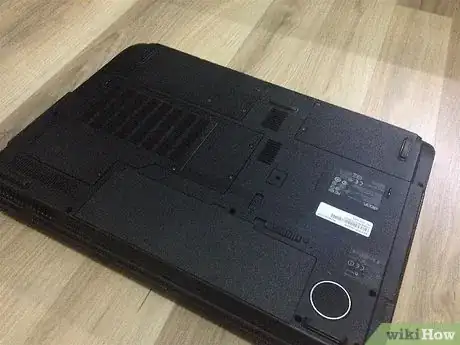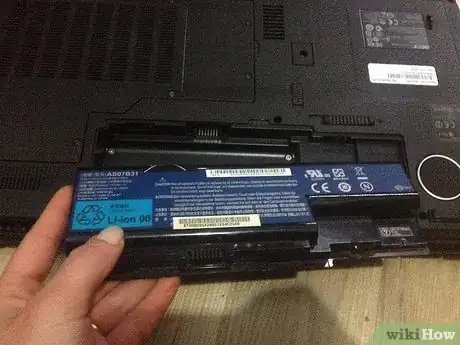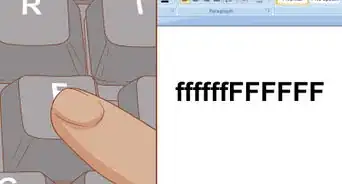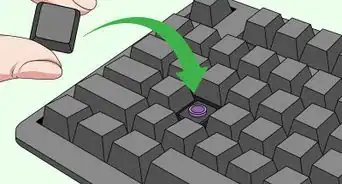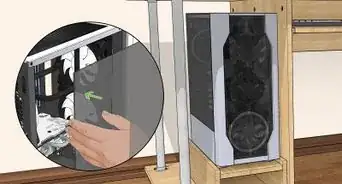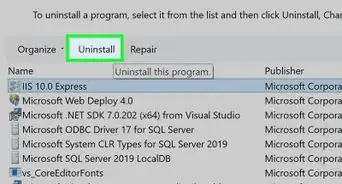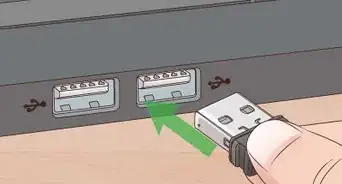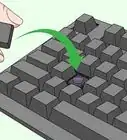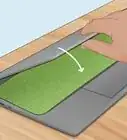wikiHow is a “wiki,” similar to Wikipedia, which means that many of our articles are co-written by multiple authors. To create this article, 18 people, some anonymous, worked to edit and improve it over time.
This article has been viewed 189,176 times.
Learn more...
Your computer's case houses all of your computer's components, protects them from damage, and manages airflow to keep everything cool. Opening your case will allow you to clean out excess dust and replace or install new components. You can access much more in a desktop computer than a laptop, which typically only allows access to the RAM and hard drive.
Steps
Opening a Desktop
-
1Gather your tools. Most cases will just one screwdriver to access. Some cases use thumbscrews, but a screwdriver can still help loosen an overly-tight screw.
- The most common screw is a 6-32, which you can use a standard #2 Phillips screwdriver to remove. This is the larger of the two most common sizes.
- The second most common screw is the M3. This is slightly smaller than the 6-32, but can still be removed with a #2 Phillips screwdriver.
- If you want to clean the inside of your case, you'll likely need some compressed air and a small vacuum.
- An electrostatic wriststrap can be helpful for grounding yourself while working inside the computer, but you can ground yourself without one.
-
2Shut down the computer. Use your operating system's Shutdown function turn the computer off.Advertisement
-
3Unplug all of the cables from the back of the computer. If you're afraid you won't be able to remember where everything goes when you need to plug it back in, take a picture or draw a diagram first.
-
4Identify the motherboard I/O (Input/Output) panel. This is located on the back of the computer, and contains a variety of different connectors, including Ethernet, speakers, USB, display, and more. Knowing where this is will help you orient your case on the table.
-
5Lay the case on your work surface with the I/O panel laying closest to the surface. This will ensure that you remove the correct panel on the computer and can access the components inside.
- Avoid laying your case on the carpet when working on the inside.
-
6Find the screws along the back of the case. You should see two or three screws along the top edge of the back of the case that hold the side panel in place. Removing these screws will allow you to remove the side panel.
- Lots of enthusiast cases and some cases from major manufacturers will use different case panel mechanisms. Some use thumbscrews that you can remove by hand, while others have a simple latch and no screws at all. If you're having difficulty figuring out how to remove or open the side panel on your case, look up your computer or case model online.
-
7Ground yourself before touching any components. Electrostatic discharge can cause significant damage to your components without you even realizing it. Ensure that you are properly grounded by attaching your electrostatic wristband to the bare metal of the computer case, or by touching a metal water tap.
-
8Clean your computer while it's open. Computer's build up dust surprisingly quick, and dust can lead to overheating, poor performance, and hardware failure. Any time you open your computer, you should take a few moments to ensure that dust isn't becoming a problem.
Identifying Desktop Parts
-
1Identify the motherboard. This is the large logic board that all of your other components are plugged into. The majority of it will probably be obscured by your installed components. The average motherboard has a processor socket, PCI slots for graphics and expansion cards, RAM slots for memory, and SATA ports for hard drives and optical drives.
-
2Identify the processor. You usually can't see the processor because it is covered by a heat sink and CPU fan. It is typically fairly centrally located on the motherboard, closer to the top than the bottom.
-
3Identify the RAM. Your computer's RAM sticks are long and short, and the slots can usually be found fairly close to the processor socket. The sockets may be partially or completely occupied by RAM sticks.
-
4Identify the graphics card. If your computer has a graphics card installed, it will be located in the PCI slot closest to the processor, called the PCI-E slot. The PCI slots are typically found on the bottom half of the motherboard, and line up with removable bay covers on the back of your case.
-
5Identify the power supply. Depending on your case, the power supply may be located at the top or bottom of the case, along the back side. It is a large box that routes power to all of the components in your computer. You can follow the power cables to see that all of your components are powered.
-
6Find your hard drive(s). Your hard drives are typically installed in bays attached to the front of the case. The hard drives are connected to the motherboard via SATA cables (older computers use IDE cables, which are wide and flat). They are also connected to the power supply with SATA power connectors (old drives use Molex connectors).
-
7Identify your optical drive(s). These can often be found directly above your hard drive(s). They are larger than the typical hard drive, and poke out through the front of the case so that they can be accessed. Like hard drives, all modern optical drives use SATA connectors.
-
8Identify the fans. Most computers will have several fans installed. There may be one or more case fans, as well as a fan on the processor. These fans are connected to the motherboard, and may be connected to the power supply as well.
- Click here for detailed instructions on installing a new computer fan.
Opening a Laptop
-
1Gather your materials. Laptops use much smaller screws than desktop computers, and as such you'll need smaller Phillips screwdrivers. The most common screwdriver required for laptops is a #0 Phillips.
- If you want to clean the inside of your laptop, you'll want a can of compressed air.
-
2Shut down the laptop. Use your operating system's Shutdown function turn the computer off.
-
3Unplug any attached cables. This includes your power adapter, and any USB devices, headphones, or other peripherals.
-
4Flip the laptop over on your work surface. You will likely see one or more panels that can be removed. Laptops offer much less access to your components than desktop computers. This is because the majority of a laptop's hardware cannot be replaced without extensive soldering knowledge.
-
5Remove the battery. This will help prevent the laptop from accidentally turning on while you're working on it.
-
6Remove the screws for the panels you want to open. You may have one or more panels that allow you to access your replaceable components. Most laptops allow you to access the hard drive bay and the RAM.
About This Article
To open a laptop computer, start by shutting the computer down completely and unplugging any attached cables or power adapters. Next, flip the laptop over and remove the battery to prevent the laptop from accidentally turning on while you’re working on it. Then, remove the screws from the panels with a phillips screwdriver so you can access the hard drive bay and the RAM. If you want to clean the inside of your computer, have a can of compressed air ready to blow away any dust or buildup. To learn how to open a desktop computer, keep reading!
